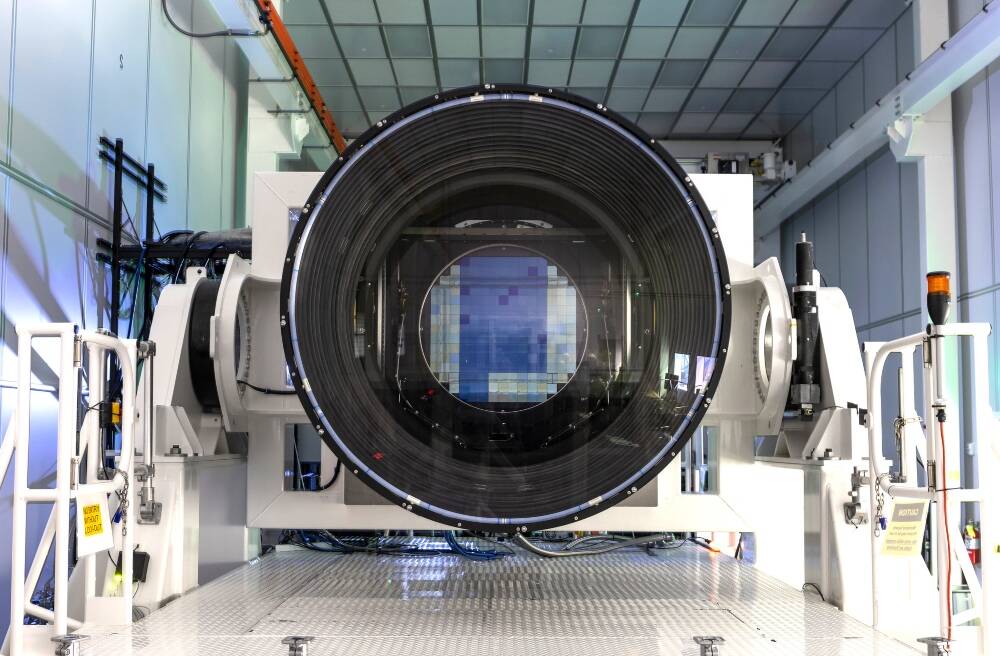Construction of the LSST Camera, destined for the Vera C Rubin Observatory in Chile has been completed at the SLAC National Accelerator Laboratory in Silicon Valley.
Dubbed the Legacy Survey of Space and Time (LSST) Camera, it’s capable of taking photos with a resolution of 3,200 megapixels. It’s five years late – and it’s been almost 12 since the project was cleared – but at last the instrument is fully assembled.
“Its images are so detailed that it could resolve a golf ball from around 15 miles away, while covering a swath of the sky seven times wider than the full Moon,” enthused deputy director of the Vera C Rubin observatory Aaron Roodman. “These images, with billions of stars and galaxies, will help unlock the secrets of the universe.”
The LSST Camera will be mounted on the Simonyi Survey Telescope, located on top of Cerro Pachón – a mountain in the Andes that rises 9,800 feet (just under 3km) above sea level. Astronomers hope to get pictures of the southern hemisphere’s sky in never-before-seen-quality using the giant hardware – once it’s delivered.
Stars, camera, action! The LSST … Click to enlarge. Source: Jacqueline Ramseyer Orrell/SLAC National Accelerator Laboratory
“The Southern Atacama high desert is one of the very best sites for Astronomical Observatories in the world, and the US has had telescopes there since the early 1970s,” Roodman told The Register.
“The observatory’s surroundings are remarkable – the high desert is a spartan but beautiful place,” he added.
Construction for the LSST Camera began almost nine years ago to the day, in SLAC’s clean room specifically made for the project. The camera is 12.25 feet (3.73m) long, 5.5 feet (1.65m) tall, and weighs 6,200 pounds (2,800kg). Given its mammoth dimensions, the LSST Camera will only be delivered to the observatory by May, Roodman told us.
Evidently it does not qualify for Amazon Prime.
To get to 3.2 gigapixels, the LSST Camera is equipped with three lenses – the largest of which is 5.1 feet (1.57m) in diameter – and 189 charge-coupled device (CCD) sensors divided into 21 groups and organized into grids. The camera only has a field of view of 3.5 degrees and every 20 seconds, it can take a photo with a 15 second long exposure time.
Photographing the night sky in search of darkness
The purpose of the LSST Camera is largely to further the study of dark energy and dark matter. These are two concepts in astrophysics that aren’t entirely understood – dark energy is theorized to be the force behind the expansion of the universe, and dark matter isn’t affected by light or electromagnetic waves.
Photographs taken from the LSST Camera could reveal important clues about how dark energy and dark matter interact with the universe. Researchers will be looking for evidence of weak gravitational lensing – a light-bending phenomenon that can indicate how mass is distributed across the universe. How weak gravitational lensing changes over time will also be of key importance.
SLAC’s brand-new toy isn’t alone in the search for dark energy and dark matter. The European Space Agency’s Euclid space telescope – orbiting Lagrange point 2 (L2) – is on a similar mission.
Of course, the LSST Camera can also be used for good old charting. The high resolution of the camera can help map out the Milky Way in superb detail – especially for smaller objects. As director of Rubin Observatory Construction professor Željko Ivezić put it: “We will soon start producing the greatest movie of all time and the most informative map of the night sky ever assembled.”
The number of known objects in the sky may even increase tenfold, according to the Rubon Observatory, though we’ll just have to wait and see. The instrument could potentially help find early warning signs of asteroids that seem to be getting too close to Earth for comfort. Though, if we don’t also have the technology to destroy such asteroids, maybe we’d rather not know too far in advance about our impending doom. ®

Dr. Thomas Hughes is a UK-based scientist and science communicator who makes complex topics accessible to readers. His articles explore breakthroughs in various scientific disciplines, from space exploration to cutting-edge research.







